Mad Hedge Biotech and Healthcare Letter
December 5, 2023
Fiat Lux
Featured Trade:
(A UNION IN THE MAKING?)
(HUM), (CI), (CVS), (AET), (UNH)
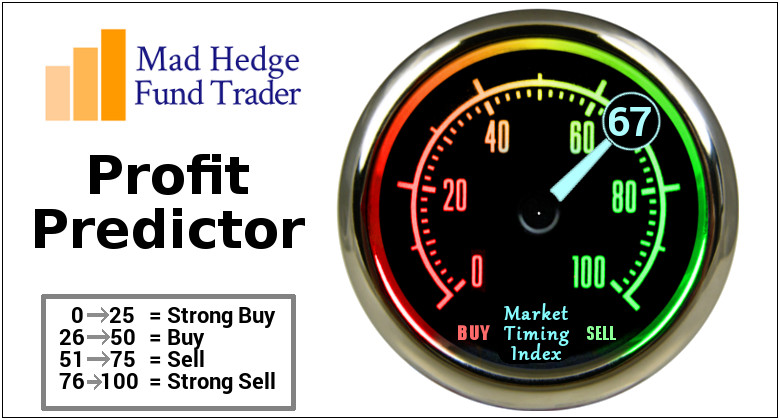
Mad Hedge Biotech and Healthcare Letter
December 5, 2023
Fiat Lux
Featured Trade:
(A UNION IN THE MAKING?)
(HUM), (CI), (CVS), (AET), (UNH)

The healthcare market was recently abuzz with the news of a potential mega-merger that sent shares of Humana (HUM) and The Cigna Group (CI) into a nosedive - 5.5% and 8.1% respectively. This news, centered around a transaction combining stocks and cash, could significantly reshape the healthcare landscape.
But let's not get ahead of ourselves. After all, in the world of healthcare mergers, certainty is as elusive as a mirage.
Still, if you’re feeling a sense of déjà vu, it’s because this isn’t the first time Humana and Cigna have danced around the idea of a merger.
Recall 2015 when Humana flirted with the idea of a merger with Cigna but ended up cozying up to Aetna (AET) – a union that never saw the light of day, thanks to the US courts.
A similar fate befell an attempted merger in 2017, when Elevance Health (ELV), then known as Anthem, tried to acquire Cigna for $48 billion, only to be blocked by the courts.
Since these previous attempts, both Humana and Cigna have significantly grown.
Prior to this market shake-up, Humana boasted a market capitalization of $62.87 billion, with Cigna commanding a higher ground at $83.77 billion.
But as history shows, regulatory skepticism often casts a long shadow over such ambitious plans, with fears of increased costs for the American public. This skepticism has extended to smaller deals, such as UnitedHealth Group's (UNH), which faced hurdles in their acquisition attempts.
Yet, the potential merger between these healthcare giants teases the possibility of substantial cost savings.
When giants unite, the promise of cost savings looms large. Redundancies in corporate functions like HR, investor relations, and executive positions offer low-hanging fruits for cost-cutting.
But the real cherry on top is the potential for operational synergies – cross-selling opportunities and leveraging infrastructure for efficient service delivery.
Humana's stronghold lies in its Insurance unit and CenterWell, with the latter, including pharmacy, provider services, and home solutions, contributing 16.3% of last year's revenue.
In contrast, Cigna wades into deeper waters, with its substantial revenue streams from pharmacy benefits and home delivery pharmacy businesses.
Now, let’s look at the companies in terms of revenue. A side-by-side of Humana and Cigna's revenues offers an intriguing picture.
Humana's Medicare Advantage revenues soared from $59.47 billion in 2020 to $72.89 billion in 2022.
Cigna, however, has only inched forward in this space. Humana's evident dominance in Medicare Advantage, with a market share of about 18%, contrasts sharply with Cigna's modest 2%.
Despite these differences, a merger isn't outside the realm of possibility.
For example, CVS (CVS) managed to successfully acquire Aetna for $69 billion back in 2018, with the two companies eventually turning into CVS Health.
While that merger proved that big deals could happen, the odds for Humana-Cigna are not exactly in Vegas betting territory.
Speculations about Cigna offloading its Medicare Advantage operations could make this merger more palatable to regulators, but it's far from a sure bet.
Another question to think about amidst these talks is why the market reacted like someone yelled “fire” in a crowded theater.
Well, it all boils down to the fear of overpayment.
Cigna, being larger, could potentially swallow Humana. But Humana, with its stronger financial health and market positioning, is seen as the more desirable entity.
The valuation metrics – price to earnings, price to adjusted operating cash flow, and EV to EBITDA – further complicate this perception, as Humana commands a premium.
With a potential merger announcement might be on the horizon, investors should approach this with a blend of skepticism and intrigue. The market is jittery, perceiving a possible merger as potentially detrimental to shareholder value.
However, should the merger succeed against the odds, the combined prowess of Humana and Cigna could spell a profitable future for investors. Knowing that the healthcare sector is never short of surprises, this potential merger, should it come to pass, could be one for the history books.
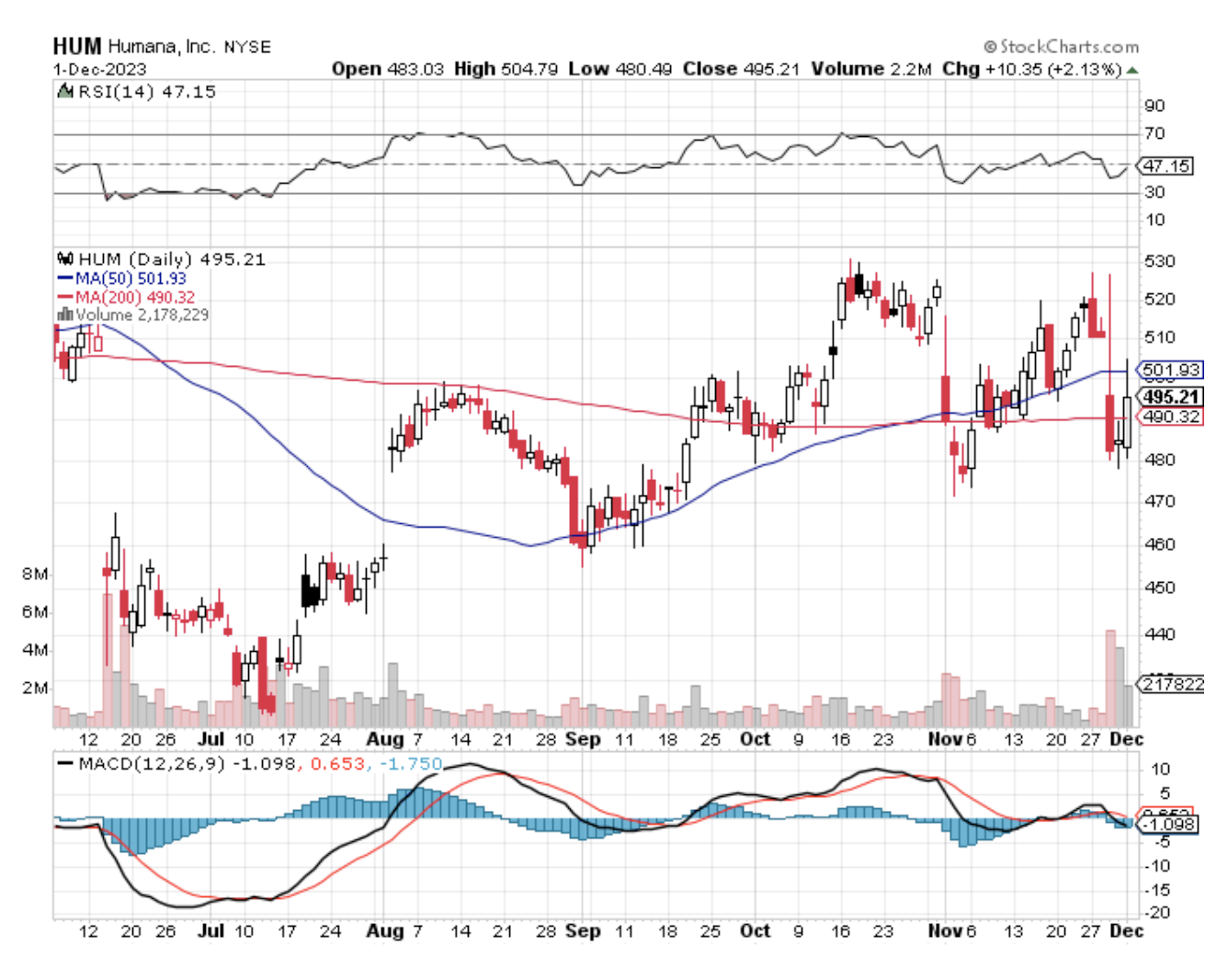
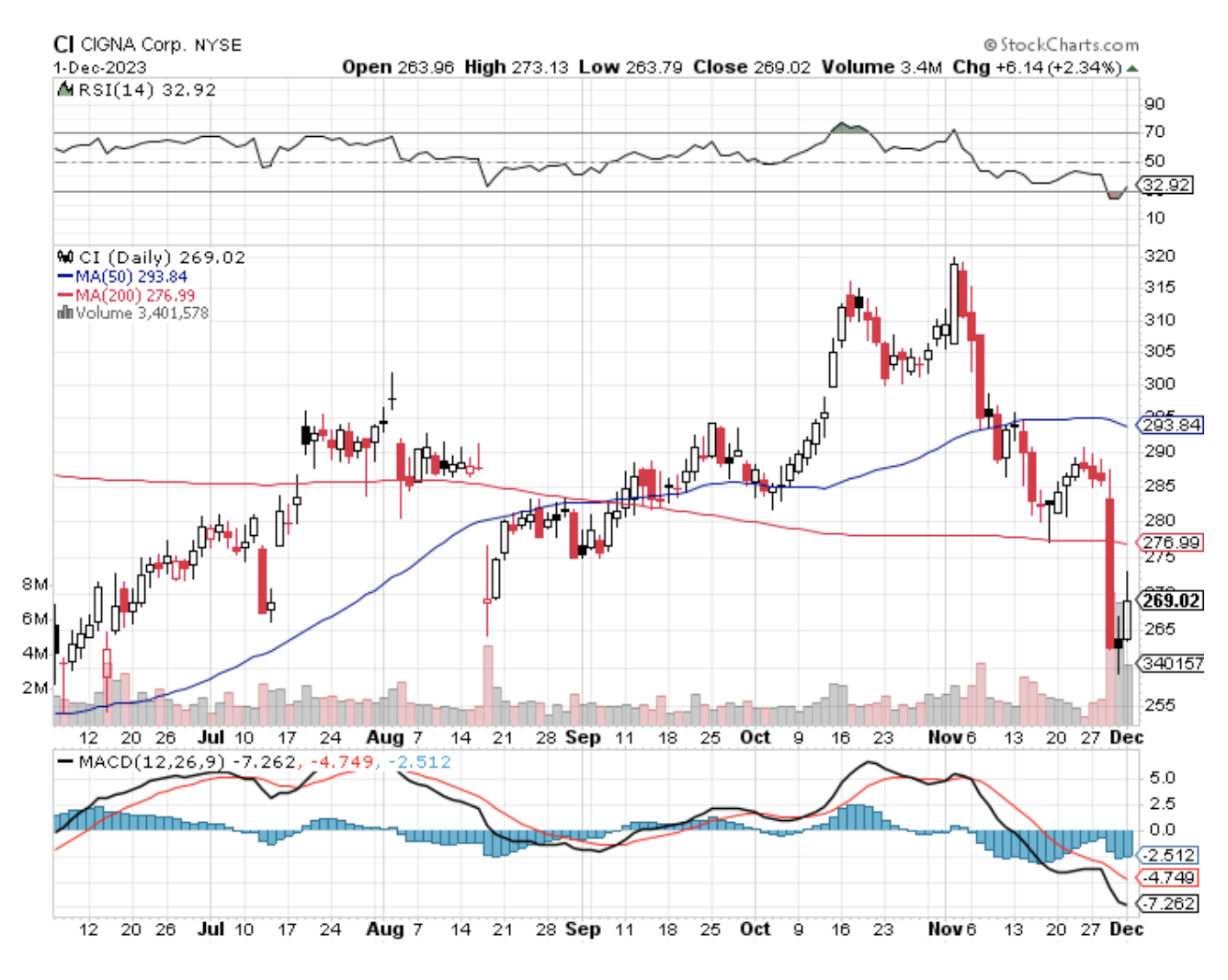
Mad Hedge Biotech & Healthcare Letter
March 24, 2020
Fiat Lux
Featured Trade:
(THE BIG CORONA PLAY WITH TELEDOC HEALTH),
(TDOC) (HUM), (AET), (CI)

The coronavirus disease (COVID-19) outbreak continues to inspire terror across the globe.
To date, there are roughly 398,107 confirmed cases and over 17,454 documented deaths, pushing communities to take proactive measures to stem the tide of this global pandemic.
In its wake, an increasing number of government officials and health professionals like the US Centers for Disease Control (CDC) have advised patients to take advantage of telemedicine and virtual health systems as much as possible. This is particularly helpful for those with respiratory symptoms since using these platforms could minimize contact with others along with the spread of the virus.
One of the no-brainer beneficiaries of this advice is virtual healthcare services provider Teladoc Health (TDOC).
Basically, companies like Teladoc offer personalized care without the need for patients to leave their houses. Although the kinks have yet to be worked out, the telemedicine sector should be expected to skyrocket in the weeks and even months ahead.
In fact, Teladoc shares gained 9% since February 19 -- a good sign for the company especially since the broader market went down by roughly 20% over the same period.
Earlier this month, Teladoc disclosed that the number of patient visits registered in its system showed a 50% increase week over week.
Ever since COVID-19 hit the country, the company has been fielding at least 15,000 visits on a daily basis, reaching over 100,000 weekly. Teladoc shared that it has been experiencing "visit demand consistent with peak flu volumes."
The convenience that companies like Teladoc provide can ease the burden on the broader healthcare system, which has been overworked with COVID-19 cases.
Another factor that could have contributed to Teladoc’s increasing patient load is the decision of some major health insurers to waive the patient costs for telemedicine visits.
So far, Humana (HUM), Aetna (AET), and Cigna (CI) confirmed that this policy will be relaxed throughout the national health emergency.
Needless to say, this announcement was highly appreciated by their clients, with Teladoc reporting that over half its patient visits in the past weeks are from first-time users.
However, this isn’t exactly Teladoc’s first big break.
Even prior to the pandemic and the recommendations from health experts, Teladoc has been quite impressive on its own.
Throughout the years, Teladoc has been consistent in reporting strong growth metrics. Since it went public in 2015, the stock has skyrocketed to 330% compared to the 30% gain for the S&P 500.
Reviewing its fourth-quarter earnings report for 2019, it’s clear that this is a stock for long-term investors. Based on the management’s commentary and how the story is playing out in the past months, there’s a good possibility that investors will be richly rewarded as well.
In 2019 alone, Teladoc added a total of 14 million new members to record an impressive growth rate of 61%. The company closed the year with 36.7 million patients registered in its system.
In terms of revenue, Teladoc delivered $156.5 million, showing off a 27% jump year over year.
This is particularly impressive as it eclipsed the high end of its guidance, which fell somewhere between $149 million and $153 million. It also beat the consensus estimates of analysts at $152.95 million.
This increase in revenue was bolstered by strong growths both in the US and the international markets. Its subscription-access fees reached $127 million, which was a 24% increase year over year.
Fees collected from visits showed quicker growth to contribute $29.5 million, demonstrating a 47% jump compared to the same period in 2018.
Total office visits increased by 44%, climbing to 1.24 million and surpassing the company’s guidance range of 1 million and 1.2 million as more and more patients opt for the subscription-based plans.
Meanwhile, its paid memberships in the US climbed 61% year over year to reach 36.7 million while its fee-only access soared by 104% to jump to 19.3 million members.
While 2019 was definitely a good year for the company, it’s difficult to downplay the reality that its impressive adoption curve recently could make 2020 an even better year for Teladoc.
Looking at how the company has been thriving, two things could happen for Teladoc.
One possibility is for it to develop into one of the most disruptive companies in the industry. The second possibility is that it will get acquired by a bigger player.
No matter what happens, the outcome will be a win-win for its investors.
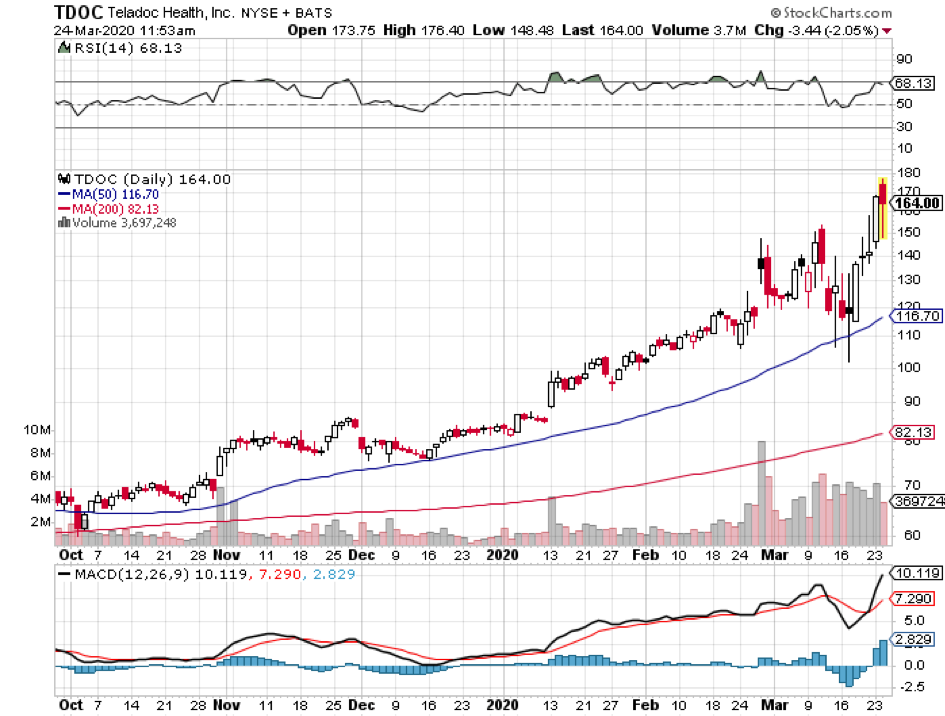
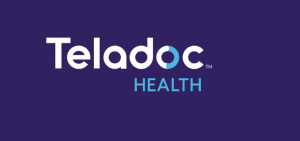
Mad Hedge Biotech & Healthcare Letter
October 15, 2019
Fiat Lux
Featured Trade:
(CASHING IN ON ECONOMIES OF SCALE WITH CIGNA)
(CI), (ESRX), (AET)
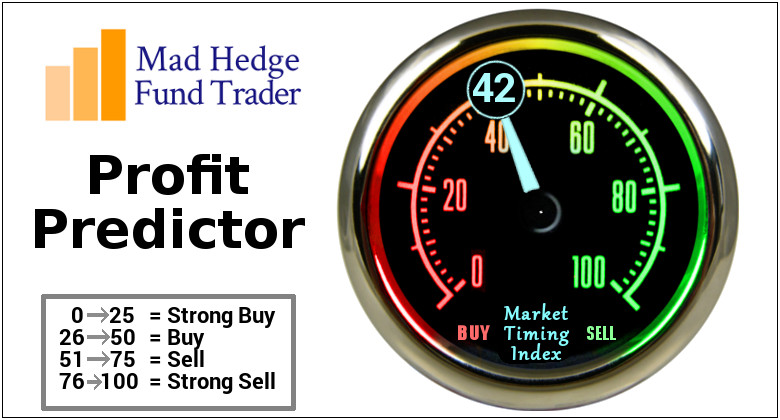
The future of health care will be no doubt driven by massive economies of scale that crush costs and balloon profit margins and there has been no better practitioner of that philosophy than Cigna Corp. (CI)
The company recently reported a robust quarterly blowout. The managed care service provider disclosed that it recorded $4.30 in earnings per share for the second quarter, crushing the Wall Street estimate of $3.74 per share. Total profits were recorded to be $34.4 billion, also topping previous estimates of $33.2 billion.
Among the revenue components of Cigna, pharmacy sales were identified as major pushers as it reached $26.3 billion -- a huge jump from the $750 million recorded during the same period in 2018. This is primarily due to the acquisition of pharmacy benefit manager Express Scripts for $67 billion in December last year. Cigna’s premiums also went up 8.9% year-over-year to reach $9.8 billion. Meanwhile, fees grew 76% to $2.39 billion.
The move to merge with Express Scripts (ESRX) has allowed Cigna to secure long-term growth as the company transformed into a one-stop-shop for clients’ healthcare needs. It can now cater to demands ranging from drug sales up to insurance coverage. Since it brings together both medical services and pharmacy benefits under one roof, Cigna has become a more attractive option for its ability to provide better treatments and lower expenses.
With this deal, Cigna gained a competitive position to become one of the major movers in the healthcare insurance industry. So far, the combined company is projected to generate a minimum free cash flow of $6 billion by 2021.
However, one major obstacle in Cigna’s growth is the uncertainty arising from the current political climate in the United States ahead of the 2020 election. Cigna’s share price almost perfectly inversely tracks with the polling numbers of Elisabeth Warren, who has essentially promised to nationalize the company. The better she does the worse Cigna does, and that has given us our entry point.
At the moment, health insurers remain uncertain of some aspects of their business due to potential regulatory changes that could plunge them into debt.
To address this, Cigna is following the footsteps of fellow healthcare giants like Aetna Inc (AET) which sold its group life and disability unit to Hartford Financial Services Group for $1.45 billion in 2017.
While Cigna hopes that the merger with Express Scripts could help mitigate the effects of future government policy changes, the company is still actively seeking other alternatives.
One of its plans is to sell its group benefits insurance unit, which has an estimated value of $6 billion, to other insurers with an already established division and are looking to scale. The sale could include the life and accidental death as well as dismemberment coverage clusters of Cigna. This move will allow the company to focus more on healthcare.
Given its revenue trajectory in the first half of 2019 though, the company’s outlook indicates a continuing momentum into year-end. In fact, Cigna’s total revenues this year are projected to rise somewhere between $136 and $137 billion compared to the $132.5 and $134.5 billion range predicted earlier. This indicates a 180% increase year-over-year.
Meanwhile, its earnings per share are expected to reach $16.90 compared to the earlier earnings guidance of $16.65, representing a 17% rise year-over-year. The company’s medical clients are estimated to increase by roughly 200,000 as well, achieving 97% to 98% customer retention in its health services sector in 2020.
Cigna’s expansion to establish an international presence is also a promising move towards diversification. In the first quarter of 2019, the company acquired OnePath Life Insurance from the ANZ Bank in New Zealand. This deal allows Cigna to gain access to an existing client base and offer an expanded set of services.
Aside from achieving international operations expansion, this acquisition also reassures Cigna’s investors of the company’s capacity to effectively deploy capital to drive long-term growth.
So far, Cigna has provided strong reasons for it to be a “BUY.” In terms of its growth rate, the company’s revenues showed a CAGR of 11% from the year 2010 up to 2018. However, it rose by 194% in the first half of this year, courtesy of its Express Scripts merger. Its recent acquisitions also demonstrated consistent top-line growth and the ability to effectively distribute its products and services.
Apart from its top-line growth, Cigna has also managed to maintain its bottom-line profitability. This is clear in the annual earnings growth it recorded since 2009 and its efforts to maintain operating profitability via controlled medical care and other operating costs.

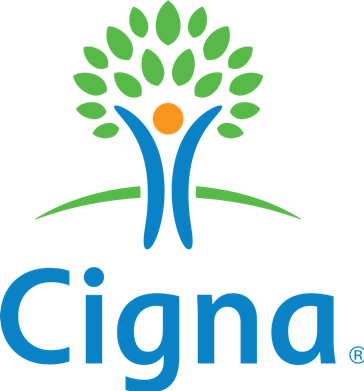
Global Market Comments
June 21, 2018
Fiat Lux
SPECIAL BIOTECH ISSUE
Featured Trade:
(HERE COMES THE NEXT REVOLUTION),
(CVS), (AET), (BRK.A), (AMZN), (JPM), (CI),
(BIIB), (CELG), (REGN)
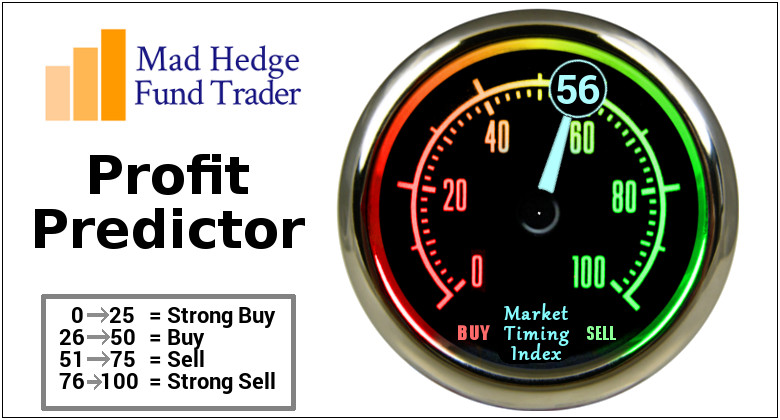
Technology and biotechnology are the two seminal investment themes of this century.
And while many tech companies have seen share prices rise 100-fold or more since the millennium, biotech and its parent big pharma have barely moved the needle.
That is about to change.
You can thank the convergence of big data, supercomputing, and the sequencing of the human genome, which overnight, have revolutionized how new drugs are created and brought to market.
So far, only a handful of scientists and industry insiders are in on the new game. Now it's your turn to get in on the ground floor.
The first shot was fired in December 2017 when CVS (CVS) bought Aetna (AET) for an eye-popping $69 billion, puzzling analysts. A flurry of similar health care deals followed, with Berkshire Hathaway (BRK.A), Amazon (AMZN) with its Verily start-up, and J.P. Morgan (JPM) joining the fray.
March followed up with a Cigna (CI) bid for Express Scripts, a pharmacy benefits manager. Apple (AAPL) has suddenly launched a bunch of health care-based apps designed to accumulate its own health data pool.
What's it all about? Or better yet, is there a trade here?
No, it's not a naked bid for market share, or an attempt to front run the next change in health care legislation. It's much deeper than that.
In short, it's all about you, or your data to be more precise.
We have all seen those clever TV ads about IBM's (IBM) Watson mainframe computer knowing what you want before you do. In reality we are now on the third generation of Watson, known as Summit, now the world's fastest super computer.
Summit can process a mind-numbing 4 quadrillion calculations per second. This is computing muscle power that once was associated with a Star Trek episode.
Financed by the Department of Defense to test virtual nuclear explosions and predict the weather, Summit has a few other tricks up its sleeve. It can, for example, store every human genome and medical record of all 330 million people in the United States, process that data instantly, and spit out miracle drugs almost at whim.
You know all those lab tests, X-rays, MRI scans, and other tests you've been accumulating over the years? They add up to some 30% of the world daily data creation, or some 4 petabytes (or 4,000 gigabytes) a day. That's a lot of zeroes and ones.
Up until a couple of years ago, this data just sat there. It was like having a copy of the Manhattan telephone book (if it still exists) but not knowing anyone there. Thanks to Summit we now not only have a few friends in Manhattan, we know everyone's most intimate details.
I have been telling readers for years that if you can last only 10 more years you might be able to live forever, as all major human diseases will be cured during this time. Summit finally gives us the tools to achieve this.
Imagine the investment implications!
The U.S. currently spends more than $3 trillion on health care, or about 15% of GDP, and costs are expected to rise another 6% this year. To modernize this market, you will need to create from scratch four more Apples or six more Facebooks (FB) in terms of market capitalization. You can imagine what getting in early is potentially worth.
Crucial to all of this was Craig Venter's decoding of his own DNA in 2000 for the first time, which cost about $1 billion. Today, you and I can get 23andMe, Ancestry.com or Family Tree DNA to do it for $100, with most of the work done in China.
Of course, key to all of this is getting the medical data for every U.S. citizen on line as fast as possible. The Obama administration began this effort seven years ago. Remember those gigantic overstuffed records rooms at your doctor's office? You don't see them anymore.
But we have a long way to go, and 20% of the U.S. population who don't HAVE any medical records, including all of the uninsured, will be a challenge.
To give you some idea of the potential and convince that I have not gone totally MAD let me tell you about Amgen's (AMGN) sudden interest in Iceland. Yes, Iceland.
There, a struggling, young start-up named deCode sequenced the DNA of the entire population of the country, about 160,000 individuals. It tried to monetize its findings but it was early and lost money hand over fist. So, the company sold out to Amgen in 2012 for $415 million.
Until then targeting molecules for development was based on a hope and a prayer, and only a hugely uneconomic 5% of drugs made it to market. Using artificial intelligence (yes, those NVIDIA graphics processors again) to pretest against the deCode DNA data based it was able to increase that hit rate to 75%.
It's not a stretch to assume that a 15-fold increase in success rates leads to a 15-fold improvement in profitability, or thereabouts.
Word leaked out setting off a gold rush for equivalent data pools that led to the takeover boom described above. And what happens when the pool of data explodes from 160,000 individuals to 330 million? It boggles the mind.
As a result, the health care industry is now benefiting from a "golden age" of oncology. Average life expectancy for chemotherapies is increasing by months at a time for specific cancers.
All of this is happening at a particularly fortuitous time for drug, health care, and biotech companies, which are only just now coming out of a long funk.
Traders seemed to have picked up on this new trend in May, which is why I slapped on a long position in the iShares Nasdaq Biotechnology ETF (IBB) (click here for a full description).
Like many companies in the sector it is coming off of a very solid one-year double bottom and is going ballistic today.
The area is ripe for rotation. Other names you might look at include Biogen (BIIB), Celgene (CELG), and Regeneron (REGN).
If you have grown weary of buying big cap technology stocks at new all-time highs, try adding a few biotech and pharmaceutical stocks to spice this up. The results may surprise you.
As for living forever, that will be the subject of a future research piece. The far future.





Not a day, an hour, or a minute goes by without the media blasting at me about how terrible Obamacare is. I wondered, how terrible can it be? There?s got to be a trade in there somewhere.
After intensively researching several industries I concluded that the investment opportunities created by the president?s signature legislative accomplishment are absolutely massive. The health care industry is about to get 30 million new customers with government guaranteed payments. Ten?s of millions more are being driven into the arms of the private health insurers as well. It?s almost the same gravy train that the defense industry has been living off of for the past 75 years.
The stock market has been screaming as much at us all year. Take a look at the Health Care Select Sector SPDR ETF (XLV), which has been rocketing for the past three years. Its ascent accelerated on October 1, when Obamacare officially kicked in.
You will also find the same windfall is showering upon the health insurance industry. The shares of the second largest company in the country, WellPoint (WLP) have soared by 68% this year, while the fourth biggest (AET) is up an impressive 40%.
The speeches claiming that Obamacare is a failure were written in September, before the program ever started. Not, September, 2013, but September, 1936, when Republicans fought tooth and nail against Social Security. The speeches are almost identical, word for word. I?m not kidding!
In fact, insurance exchanges are one of the oldest forms of commerce, dating back to London in the 1600?s. Lloyds of London has been around since 1871, and makes a profit in most years.
It will take Obamacare a decade to become fully operational and actuarially sound. After that it should cost the government almost nothing, just a few hundred million dollars a year for administration of the exchanges. Americans are the smartest people in the world, so there is no reason for this not to work, except political ones. In fact, ours should be better than those in Europe and Asia.
The political obstacles will fade as well. Hillary Clinton is the overwhelming front-runner for the 2016 presidential election. If elected, the earliest Republicans could repeal Obamacare would be 2025. There will probably be a liberal majority on the Supreme Court by then as well. With a 12-year track record, it is unlikely that any political party will try to repeal government-sponsored health insurance at that stage.
The stock market is also telling you that Obamacare is here to stay. Believe in the wisdom of crowds. They are usually right.
This is why the shares of entire health care and insurance industries are melting up now. This is why I want to buy into the industry now.
The easiest way to participate is through Health Care Select Sector SPDR (XLV), a basket of companies in the health care industry with a 1.71% dividend yield. Please note that a basket of stocks is going to deliver half the volatility of single stocks.
Therefore, we have to be more aggressive with the positioning to make any money, picking strikes that are closer to the money. Johnson and Johnson (JJ) is the largest holding in this fund, with a 12.8% weighting, while Gilead Sciences (GILD) is the fourth, with a 5.1% share. For a list of the largest components of this ETF, please click here https://www.spdrs.com/product/fund.seam?ticker=XLV .
As soon as the current correction ends, I?ll shoot out a Trade Alert to you as fast as the speed of light.
 Health Care Select Sector SPDR ETF (XLV)
Health Care Select Sector SPDR ETF (XLV)
 I Think I Hear a Trading Opportunity
I Think I Hear a Trading OpportunityLegal Disclaimer
There is a very high degree of risk involved in trading. Past results are not indicative of future returns. MadHedgeFundTrader.com and all individuals affiliated with this site assume no responsibilities for your trading and investment results. The indicators, strategies, columns, articles and all other features are for educational purposes only and should not be construed as investment advice. Information for futures trading observations are obtained from sources believed to be reliable, but we do not warrant its completeness or accuracy, or warrant any results from the use of the information. Your use of the trading observations is entirely at your own risk and it is your sole responsibility to evaluate the accuracy, completeness and usefulness of the information. You must assess the risk of any trade with your broker and make your own independent decisions regarding any securities mentioned herein. Affiliates of MadHedgeFundTrader.com may have a position or effect transactions in the securities described herein (or options thereon) and/or otherwise employ trading strategies that may be consistent or inconsistent with the provided strategies.
This site uses cookies. By continuing to browse the site, you are agreeing to our use of cookies.
OKLearn moreWe may request cookies to be set on your device. We use cookies to let us know when you visit our websites, how you interact with us, to enrich your user experience, and to customize your relationship with our website.
Click on the different category headings to find out more. You can also change some of your preferences. Note that blocking some types of cookies may impact your experience on our websites and the services we are able to offer.
These cookies are strictly necessary to provide you with services available through our website and to use some of its features.
Because these cookies are strictly necessary to deliver the website, refuseing them will have impact how our site functions. You always can block or delete cookies by changing your browser settings and force blocking all cookies on this website. But this will always prompt you to accept/refuse cookies when revisiting our site.
We fully respect if you want to refuse cookies but to avoid asking you again and again kindly allow us to store a cookie for that. You are free to opt out any time or opt in for other cookies to get a better experience. If you refuse cookies we will remove all set cookies in our domain.
We provide you with a list of stored cookies on your computer in our domain so you can check what we stored. Due to security reasons we are not able to show or modify cookies from other domains. You can check these in your browser security settings.
These cookies collect information that is used either in aggregate form to help us understand how our website is being used or how effective our marketing campaigns are, or to help us customize our website and application for you in order to enhance your experience.
If you do not want that we track your visist to our site you can disable tracking in your browser here:
We also use different external services like Google Webfonts, Google Maps, and external Video providers. Since these providers may collect personal data like your IP address we allow you to block them here. Please be aware that this might heavily reduce the functionality and appearance of our site. Changes will take effect once you reload the page.
Google Webfont Settings:
Google Map Settings:
Vimeo and Youtube video embeds:
